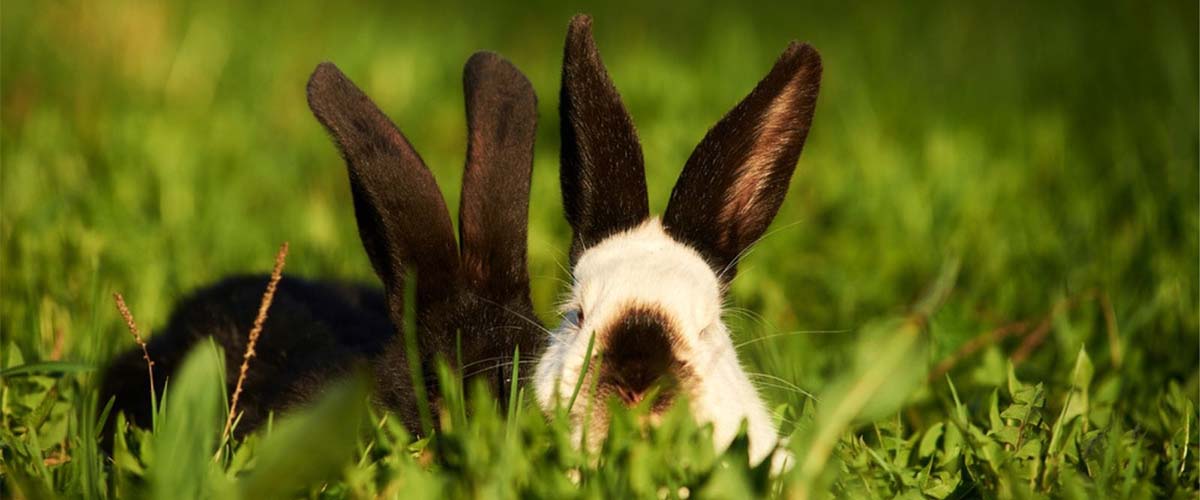Flemish Giant Breed Information
Flemish Giants, as their name suggests, are typically very large rabbits which can reach an average weight of 6-7kg at adulthood. They have a smooth coat, with a dense undercoat, so regular weekly grooming is advised to keep their coat in top condition. As a breed, they’re often described as ‘gentle giants’.
Although historically seen as a child’s pet, rabbits aren’t really suitable for small children. They don’t enjoy being picked up, and have very fragile backs that can break easily if they’re dropped. For this reason, they’re better suited to families with older children who can spend time with them, creating a large, natural environment for their rabbits to enjoy which will allow them to express normal behaviours such as digging, binkying, and running.
It’s important to also remember that rabbits are highly social animals, and in the wild are used to living in large groups with a vast living area. Where possible, this needs to be recreated for our domestic bunnies, and living with a suitable companion has to be at the top of this list. We recommend homing rabbits in compatible pairs, for example, a neutered male with a neutered female.
Possible health problems:
All rabbits are at risk of developing painful dental disease if they are not fed on the correct diet. A rabbits’ daily diet should consist of:
- At least their own body size in hay
- A handful of suitable fresh greens twice a day
- One tablespoon of commercial rabbit nuggets (twice daily if your rabbit weighs over 3.5kg)
Other conditions that can affect rabbits include:
- Rabbit haemorrhagic disease – a viral disease, causing anorexia, fever, exhaustion and quite often fatal, this disease can be prevented through regular vaccination.
- Myxomatosis – a viral disease, causing puffy eyelids, pus-producing conjunctivitis, swelling over the body and usually fatal, this disease can be prevented through regular vaccination.
- Flystrike – caused by flies laying their eggs on dirty fur, the eggs hatch into maggots which eat into the flesh and can kill a rabbit in a few hours. Make sure your rabbit stays clean; if your rabbit can’t groom properly, they’re more likely to get dirty around the back end and become susceptible to flystrike. Check under the tail every day in the summer, when they’re more prone to maggot infestations.
- Encephalitozoon Cuniculi (E. cuniculi) – a parasite which can infect rabbits and cause significant disease. Symptoms can include a head tilt, unsteadiness and weakness of the hindlegs, neck spasm and urinary incontinence.
Estimated cost over lifetime:
These costs are based on essential items such as:
- A suitable sized hutch and run
- Grooming items
- Food and bowl
- Preventive treatment such as flea, vaccinations and neutering
- Toys
- Pet carrier
- Pet Insurance
This does not include initial purchase cost, non-essential items (such as holiday care) or potential veterinary treatment of which an excess needs to be paid before your pet may be covered by pet insurance.
Please be aware that we recommend rabbits are kept in pairs as they are highly social animals, so this will double the estimated costs.
For more information on taking care of your rabbits please visit our rabbit section.
Rehoming from a reputable source:
Where you get rabbits from can have a big effect on how healthy and happy they are for the rest of their lives. Find out where our PDSA vet experts recommend here.
| Average lifespan | 5-8 years |
|---|---|
| Coat length | Short |
| Possible health problems | Dental disease. |
| Average price | £30 |
| Estimated cost over lifetime | £5,800-£9,000 |
| Average weight | 6-7kg |

